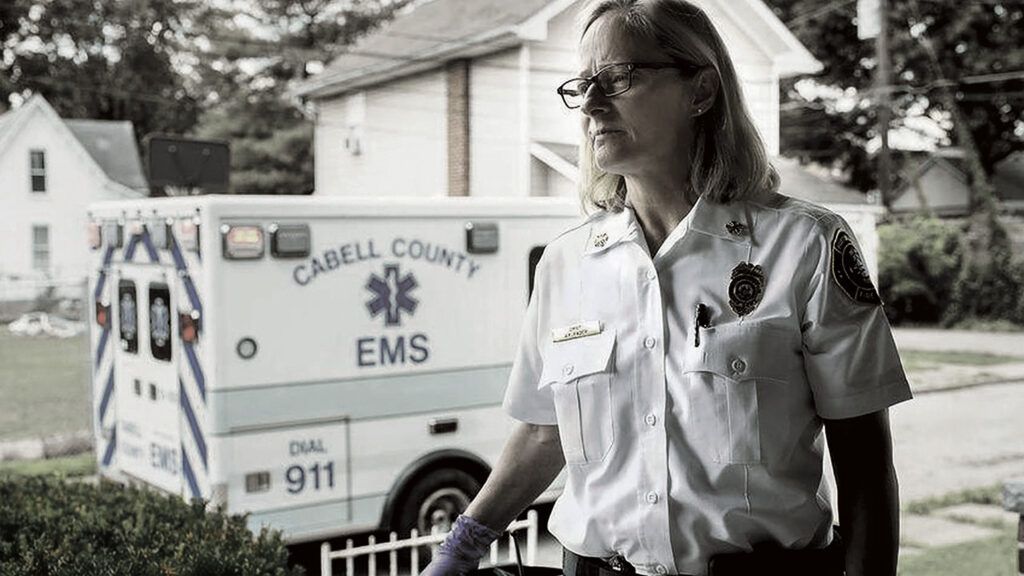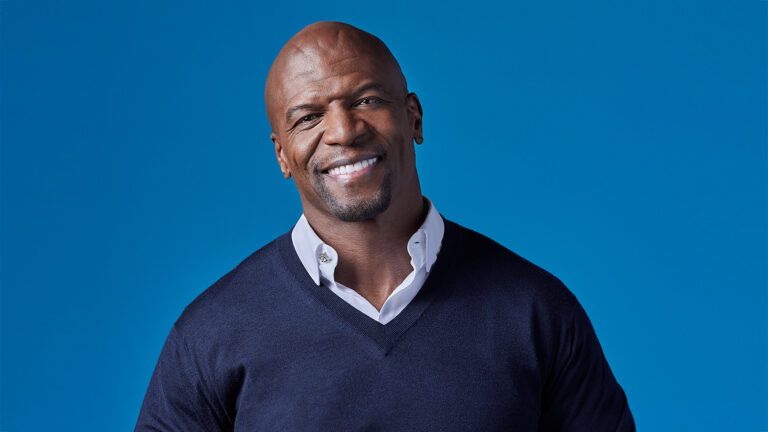I’m the fire chief in the city of Huntington, West Virginia. I command a department of nearly 100 firefighters. I grew up in this area, just across the river in Ironton, Ohio. I’ve been a firefighter in Huntington for 24 years. I love this city, and I’m fiercely loyal to it.
It pains me deeply that these days Huntington is known to the rest of the world mostly for the people who die here. “Overdose capital of America,” the national media calls my city. It’s true, the rate of drug overdose here is tragically high. We had close to 2,000 overdoses in 2017 in Cabell County, which includes Huntington. The county’s population is just 96,000 people.
The overdose rate more than quadrupled in the past two years. One in 10 residents of Cabell County suffers from a substance use disorder. One hundred thirty-two of those users died in 2016. The medical cost of this crisis in our county is estimated to be about $100 million annually.
The cost for us firefighters is high too. More than a quarter of all emergency calls we respond to today are drug overdoses. By comparison, just eight percent are for actual fires. Every day, my firefighters encounter people with substance use disorders at their worst—strung out, passed out, dead or near death, sometimes sprawled in front of their own children. We revive those people with Naloxone, a medicine that rapidly blocks or reverses the effects of opioids. Often we revive the same user a few days later. And again a few days later.

Firefighters are tough and stoical by nature. The men and women in my department do their jobs with commitment and professionalism. Still, the work takes a toll. We all mourn for our city. We are baffled and frightened by the destructive power of drugs. We grow frustrated at helping the same people over and over. We feel helpless when we arrive at a house and find children in diapers crying over the bodies of their incapacitated parents.
And yet I have hope. I believe Huntington will come to grips with this crisis. I believe even the most addicted individual can recover. I do not face the future with fear.
Why? My answer to that question starts in an unlikely place—a filthy apartment above a bar in downtown Huntington. That’s where three firefighters and I responded to an overdose call a few years ago. There we found a man named Mickey Watson lying fully clothed in a tub filled with water and ice. Mickey had overdosed on heroin. His friends put him in the tub in a misguided effort to revive him.
My firefighters and I were on our guard. We’d revived Mickey from drug overdoses four times in the past six weeks. He was a hard-core addict. He’d been using drugs since he was a child— his mom, also an addict, gave him his first taste of alcohol when he was eight years old. Now 30, Mickey could become enraged as he crashed from a high, even if his life was being saved.
His lips were blue, his body gray. The drugs had stopped his breathing. Were we too late? Two firefighters heaved him from the tub while a third kept an eye on his drug-addled friends. Mickey’s hair was plastered down his shoulders. A paramedic put a breathing mask on his face and handed me a canister of Naloxone nasal spray. I administered the medicine. An anxious pause. Mickey heaved a breath.
He was alive!
There are some people in Huntington— anyplace, really, dealing with drug abuse—who wonder why so many resources are expended on people like Mickey. I think that’s the wrong question. All people were created by God. It’s not up to me or anyone else to judge the worth of a human life. Substance use disorders do not discriminate by race, economic background or spiritual background. I can drive through any neighborhood in this city, rich or poor, point to houses and say, “Someone overdosed there.”
Many addicts in Huntington were prescribed powerful opioid painkillers after an injury. They got hooked without knowing it, then needed more drugs to avoid becoming what we call “dope sick”—nauseous, in pain, freaked out, unable to sleep. The classic symptoms of opioid withdrawal. Heroin is the next step, cheaper and stronger than pills. Before you know it, a once upstanding member of our community is a heroin addict or hooked on fentanyl. Then that person overdoses and my firefighters are called to save another life. It’s the lifesaving that gives me hope.
Lifesaving is what drew me to firefighting. In my twenties, I was happily employed as a gemologist at a mall jewelry store near Washington, D.C. One day I saw a woman collapse in the mall outside the store. I didn’t even know CPR then. I called 911 and waited helplessly until the paramedics arrived.
To my surprise, one of the paramedics was a woman. I’d always assumed firefighting was a guy’s job. They revived the woman and took her to the hospital. At that moment, I knew I wanted to do that kind of lifesaving work.
My brother, then a pastor in Huntington, told me the city was hiring firefighters. “You’re in great shape,” he said. (I was a runner.) “You should apply.”
I took the test and scored high enough to be hired. There was one other woman in the department. The next year she retired. For the rest of my time in Huntington, I’ve been the sole woman in the department.
I fought lots of fires. But my passion was always for saving lives. I even went back to school, got a nursing degree and worked on my days off in a hospital emergency room. I wanted to know more about medicine, what happened to the people we rescued after they left the ambulance.
The overdose calls started coming in the early 2000s, around the time I got promoted to lieutenant and then captain. Suddenly firefighters under my command were reviving people strung out on prescription pain pills. We never imagined we were on the cusp of an epidemic. Drugs, we thought, were a big-city problem, not an issue here in the Bible Belt.
The calls kept coming. We had to learn how to respond. I helped write our standard operating procedure for using Naloxone. We also had to develop safety measures to protect ourselves from violent addicts and to help bystanders, especially kids. The drugs we deal with are always changing—different formulations, strengths and mixtures with other drugs, such as methamphetamines. Every addict behaves differently. When a call involves a shooting or a stabbing, we wait for police to give us the all-clear before we go in.
That doesn’t sound very hopeful, does it? Well, I was raised in the First Baptist Church in Ironton. And one of the principles of my faith is that God is present even in the midst of tragedy. My mom was active with the American Cancer Society. Dad built houses with Habitat for Humanity. My parents did not let the size of a problem stop them from contributing to the solution.
I do not view the work my firefighters do as a hopeless rearguard action against an unbeatable epidemic. Every life we save is another opportunity for an addict to bottom out and turn around. You never know when God is going to change someone’s life. Remember Mickey Watson? The heroin addict in the bathtub? That day, my firefighters and I were accompanied by a film crew making a documentary about drug addiction in the heartland— a sad by-product of Huntington’s reputation as an overdose capital is the steady stream of reporters and film crews documenting life in our city.
After we revived Mickey with Naloxone, the filmmakers needed him to sign a release form so they could show the episode in their documentary. Before he signed the form, he demanded to see footage of his overdose. He watched himself getting hauled from the tub, his skin blue, his face contorted. The sight shocked and disgusted him. That moment, he made a decision to get sober.
Today Mickey is off drugs, married and working as a cook at a local restaurant beloved for its barbecued ribs. He’s a loving father to the four kids he had during his years of addiction. He helps others suffering from substance use disorders. None of that would have happened if we’d given up on him.
That’s why I have hope. Addiction is not a sign of irredeemable moral failure. It’s a disease, a physical, mental and spiritual condition. And like every other disease, it can be treated. One reason Huntington is in the news so much is because our mayor believes in being open about the problem, not fudging or downplaying the numbers. Our city’s transparency has enabled us to come together to work on solutions. Doctors and nurses do ride-alongs with my firefighters. Churches are partnering with the local medical school to share wisdom about how to help the addicted. Once a month, pastors, community leaders and I meet to confer and pray for our city.
Not long ago, I was at one of those prayer breakfasts, sitting with the police chief and other community leaders. My phone buzzed with a Facebook message. It was from someone in longterm recovery.
“I know this is random, but God put it in my heart to let you know the difference you’ve made in my life,” he wrote. He recalled the many times we’d revived him from an overdose. He described his treatment for addiction, his marriage, his job and his newfound joy raising his kids. “None of this would have happened if not for you all doing what you do so selflessly,” he concluded.
Hopeful? You bet. Every day, we firefighters see addiction’s destructive effects on our community. We persevere, knowing that God and good people working together can overcome any challenge. We will never give up.
For more inspiring stories, subscribe to Guideposts magazine.





